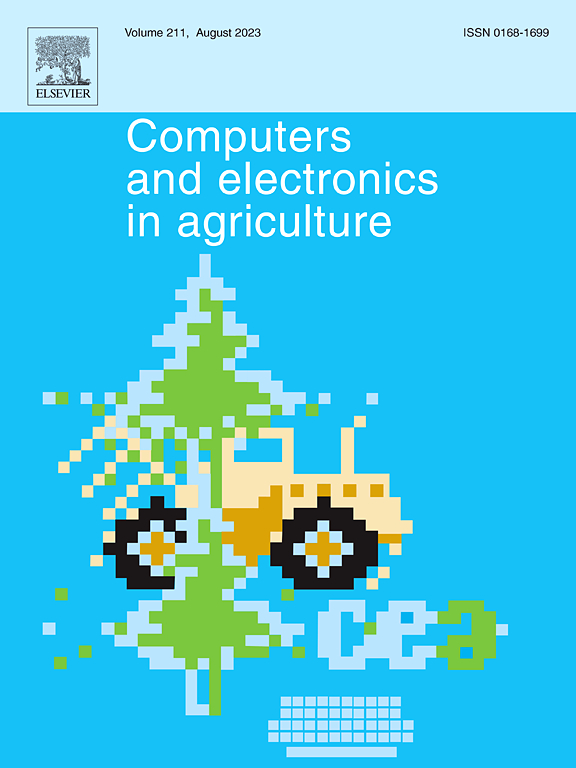基于 BI-RRT 的辣椒花授粉机制的高效运动规划
IF 7.7
1区 农林科学
Q1 AGRICULTURE, MULTIDISCIPLINARY
引用次数: 0
摘要
本文章由计算机程序翻译,如有差异,请以英文原文为准。
Efficient motion planning for chili flower pollination mechanism based on BI-RRT
To achieve obstacle avoidance for a chili flower pollination robotic arm in complex and narrow environments, this paper proposes a pollination action planning algorithm based on Map Preprocessed Step-by-Step Informed Rapidly-exploring Random Trees (PSBI-RRT). The algorithm, which is based on the Bidirectional Rapidly-exploring Random Tree (BI-RRT) algorithm, pre-processes the robot’s task space to obtain local candidate points. These points are used to divide the task space and determine segmented local goal points based on the distribution of obstacles. In the PSBI-RRT algorithm, a segmented dynamic sampling space is used instead of a fixed sampling space to reduce invalid sampling points. By introducing a hybrid expansion method combining greedy expansion with adaptive goal point attraction, the algorithm rapidly generates paths, improving the flexibility of the PSBI-RRT algorithm in exploring unknown spaces and enhancing its adaptability to the environment. 3D simulation experiments in various environmental types show that the PSBI-RRT algorithm reduces search time by over 95%, and it decreases invalid sampling nodes by 70% compared to traditional methods. The quality of the pollination path is optimized, with an average path length reduction of 30%. Pollination experiments with a 6-DOF robotic arm in both simulated and real environments show that the collision-free paths planned by the algorithm successfully guide the robotic arm from the initial to the target position without collisions. Additionally, in several typical pollination tasks, the success rate of path planning remains at 95%, significantly improving the planning success rate.
求助全文
通过发布文献求助,成功后即可免费获取论文全文。
去求助
来源期刊

Computers and Electronics in Agriculture
工程技术-计算机:跨学科应用
CiteScore
15.30
自引率
14.50%
发文量
800
审稿时长
62 days
期刊介绍:
Computers and Electronics in Agriculture provides international coverage of advancements in computer hardware, software, electronic instrumentation, and control systems applied to agricultural challenges. Encompassing agronomy, horticulture, forestry, aquaculture, and animal farming, the journal publishes original papers, reviews, and applications notes. It explores the use of computers and electronics in plant or animal agricultural production, covering topics like agricultural soils, water, pests, controlled environments, and waste. The scope extends to on-farm post-harvest operations and relevant technologies, including artificial intelligence, sensors, machine vision, robotics, networking, and simulation modeling. Its companion journal, Smart Agricultural Technology, continues the focus on smart applications in production agriculture.
 求助内容:
求助内容: 应助结果提醒方式:
应助结果提醒方式:


